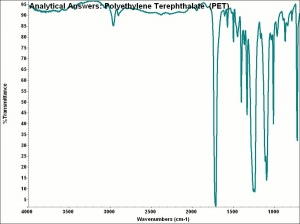Polyethylene terephthalate
Description
A type of polyester made by condensing Ethylene glycol and Terephthalic acid. In 1941, polyethylene terephthalate (PET) was patented in England. In 1951, the trademark Mylar® became the first commercially marketed polyester film. Polyester fabric was sold as Dacron® in the U.S. and as Terylene in Great Britain. PET is a semicrystalline, thermoplastic polymer that is extremely durable and dimensionally stable. It is resistant to abrasion and chemicals. PET is used to make strong moisture-resistant films used in packaging, photographs, x-rays and audio/visual tapes. Since 1977, PET has been widely used in food containers, especially for carbonated beverages. Recycled PET is used as fiberfill and in cast resins, such as boat hulls and shower units.
Synonyms and Related Terms
PET; PETE; polyester; tereftalato de polietilenglicol (Esp.); poli (tereftalato de etieno) (Esp.); polyéthylène terephthalate (Fr.); polietilene tereftalato (It.); tereftalato de polietileno (Port.); polyethylene glycol terephthalate
Examples: Dacron® [DuPont]; Fortrel®; Mylar® [DuPont]; Melinex® [DuPont]; Terylene [ICI]; Ertalyte® [Quadrant]; Eastar® {Eastman]; Impet® [Ticona]; Terphane® [Terphane]; Crimplene; Diolen; Grilene; Tergal [Tergal Industries];Terital; Tetoron; Trevira® [Trevira ex Höchst]
Applications
- Textiles (polyester)
- Rigid packaging (bottles, recyclable type 1)
- Films (Mylar)
- Waterproofing barriers
Risks
- Difficult to ignite; self-extinguishing
- Burns with a shiny, yellow-orange, sooty flame.
- Low impact strength.
- Easily degrades in UV light.
- AM Polymer: [http://ampolymer.com/SDS/PolyethyleneTerephthalateSDS.html SDS}
Physical and Chemical Properties
- Colorless, semi-crystalline resin
- Strong and impact-resistant
- Resistant to cold acids, weak alkalis, bleach and most organic solvents.
- Degrades in strong alkalis, strong hot acids, cresol.
- Permeable to oxygen and carbon dioxide
- Melting Point = 250-260
- Density = 1.36-1.41 g/ml
- Refractive Index = 1.54, 1.72
- Tenacity = 2.8-5.2
- Elongation = 19-30%
- Moisture regain = 0.4%
Comparisons
Physical Properties for Selected Thermoplastic Resins
General Characteristics of Polymers
Resources and Citations
- Omnexus: Guide on PET
- Wikipedia: Polyethylene terephthalate
- Pam Hatchfield, Pollutants in the Museum Environment, Archetype Press, London, 2002
- Marjory L. Joseph, Introductory Textile Science, Holt, Rinehart and Winston, Fort Worth, TX, 1986
- Van Nostrand's Scientific Encyclopedia, Douglas M. Considine (ed.), Van Nostrand Reinhold, New York, 1976
- Identification of Textile Materials, The Textile Institute, Manchester, England, 1985
- Theodore J. Reinhart, 'Glossary of Terms', Engineered Plastics, ASM International, 1988
